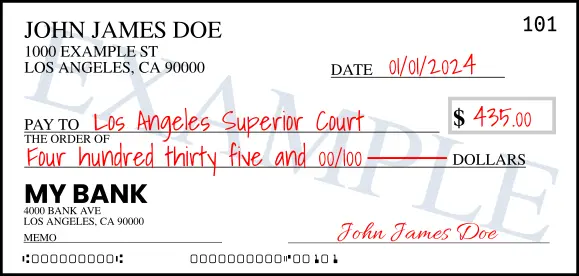Filling out Checks
A check is a document directing a bank to pay a specific amount of money to someone. A check from your bank will have your bank details on it, so when the person or entity you're paying cashes the check, the money will be taken directly from your account.
How to fill out a check
Don't sign the back of the check. That part is for the recipient to sign. If you sign the back of a check, it will most likely not be accepted.
- Write the current date on the line labeled Date. It should be in
mm/dd/yyyyformat. Checks are typically valid for 180 days after the specified date. - Write the name of the person or entity you're paying on the line labeled Pay To. Organizations will usually tell you what to write in this field, often using terms like "payable".
- Write the amount you're paying using numbers in the box with a dollar sign. Make sure to include the cents even if it's zero, so that someone can't modify the amount later.
- Under The Order Of, write the amount you're paying in words. It should be formatted as "[whole amount] and [number of cents]/100". For example, "Four hundred thirty five and 00/100". After you finish writing the amount, draw a line to the end of the field so that someone can't modify the amount later.
- Sign on the line at the bottom right
- The Memo line is optional in most cases. You can put whatever you want in there. Some organizations will ask you to put details such as account numbers there. For passport applications, you should put your full legal name and date of birth there.
Example
Here's what your check should look like once it's finished (Everything I added is in red for emphasis. Use black when you're filling out your check):

